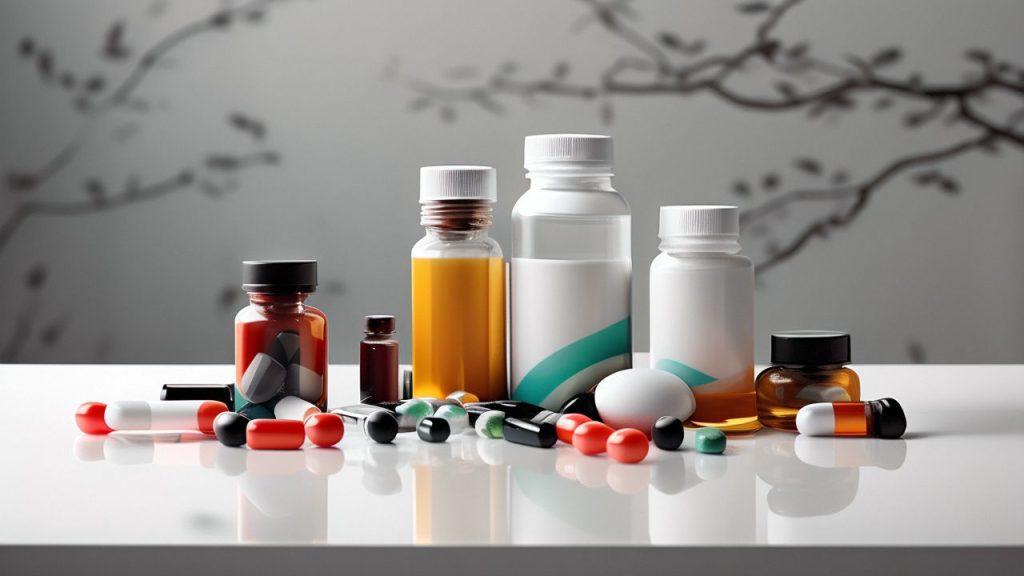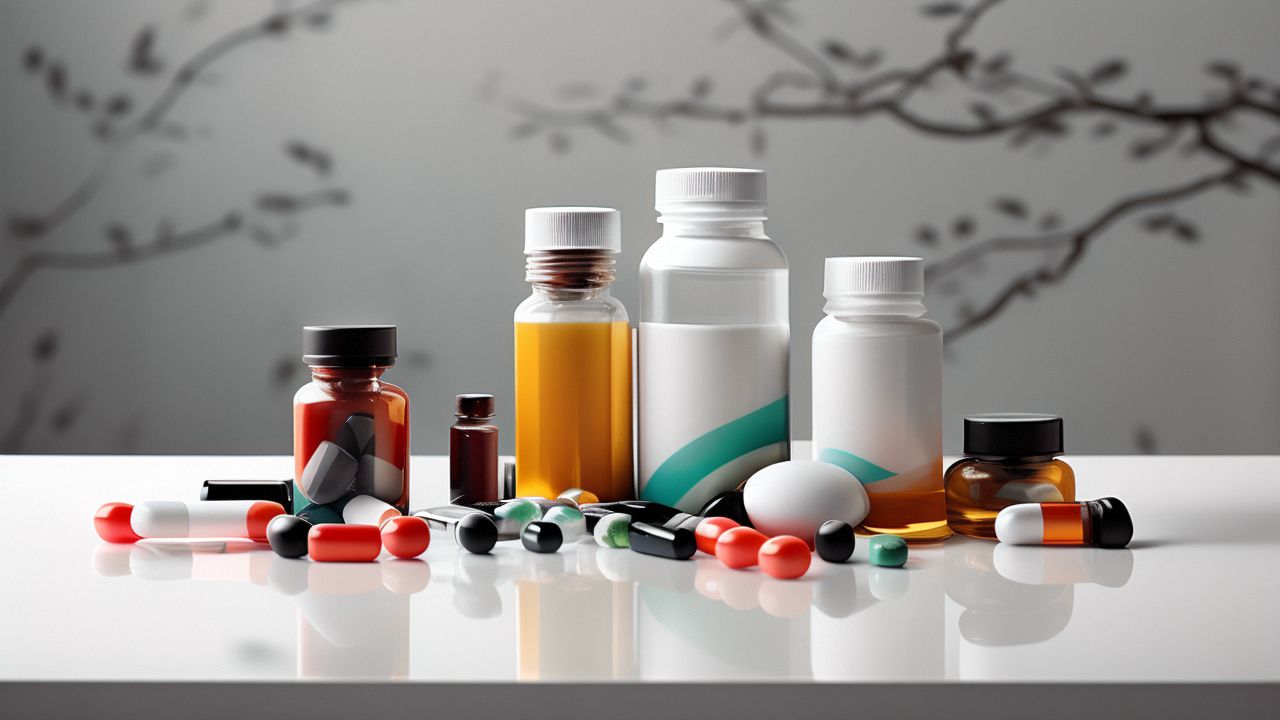Introduction to Lipid-lowering Drugs: Niacin and its Derivatives
Niacin and its Derivatives
These types of drugs may be associated with inhibiting the breakdown of adipose tissue and reducing the synthesis and secretion of very low-density lipoprotein in the liver, resulting in decreased levels of cholesterol, triglycerides, and low-density lipoprotein. Niacin can also increase the levels of high-density lipoprotein, although the mechanism is unclear. Acipimox, which has a similar structure and action to niacin, has no toxic side effects associated with niacin and is 20 times more effective in lowering lipid levels.

(1)Niacin
- [Action] The therapeutic efficacy and dosage of niacin in regulating blood lipids depend on the pre-treatment lipid levels. Oral doses of 3-6 grams per day of niacin result in a decrease in triglycerides after 3-4 days, a decrease in LDL-C after 5-7 days, and a decrease in total cholesterol of 10%-35%, LDL-C of 15%-33%, and triglycerides of 20%-40% after 5-7 days. HDL-C levels may increase by approximately 33% to a mild to moderate extent. The maximum therapeutic effect occurs in the 3rd to 5th week. Co-administration of niacin with bile acid sequestrants can enhance the cholesterol-lowering effect, and long-term treatment can lead to regression of xanthomas.
- [Dosage] Oral administration, 3 times daily, 1-2 grams per dose. To reduce adverse reactions after starting treatment, the initial dosage can be divided into 4 doses per day, with each dose ranging from 0.1 to 0.5 grams. The dosage can be gradually increased to 3 times per day, 1-2 grams per dose.
- [Adverse reactions]
- a. Niacin can cause intense flushing and itching of the skin, which many patients may find intolerable. However, if treatment is continued for several weeks, this reaction tends to diminish or disappear in most patients (taking niacin after meals, avoiding drinking vegetable soup during meals, drinking less water before taking niacin, or taking 300 milligrams of aspirin before niacin to alleviate flushing symptoms).
- b. Niacin enhances the vasodilatory effect of antihypertensive drugs and can even cause orthostatic hypotension.
- c. Niacin reduces glucose tolerance and worsens diabetes.
- d. In severe cases, it can exacerbate peptic ulcers.
- e. Rare cases of liver dysfunction, increased serum transaminase and alkaline phosphatase activity, and even cholestatic jaundice have been reported. In such cases, the medication should be discontinued promptly, and recovery is usually observed after discontinuation.
- [Precautions]
- a. Regular monitoring of liver function, blood glucose, and uric acid levels should be performed during medication. If significant abnormalities occur, the dosage should be promptly reduced or discontinued.
- b. Caution should be exercised in patients with peptic ulcers, impaired liver function, hypertension, and diabetes. Niacin should not be taken by pregnant or lactating women.
(2)Acipimox
- [Action] Acipimox is a derivative of niacin that significantly lowers triglyceride and cholesterol levels. It also increases HDL-C levels. Acipimox can promote glucose metabolism in non-insulin-dependent diabetic patients and enhance glucose absorption.
- [Dosage] Oral administration, 3 times daily, 0.25 grams per dose, taken after meals.
- [Adverse reactions] After the initial dose, flushing, warmth, and itching of the skin may occur, which usually disappear after a few days. Occasionally, gastrointestinal reactions, headache, and fatigue may occur.
- [Precautions] Caution should be exercised in pregnant or lactating women, and acipimox should be avoided in patients with peptic ulcers. Patients with renal insufficiency should take a reduced dosage.
History of discovery and development
Niacin, also known as vitamin B3, has a rich history of discovery and development that spans several decades. The story of vitamin B3 is intertwined with the understanding of nutrition, the fight against disease, and the evolution of scientific research.
The journey of vitamin B3 began in the early 20th century when scientists started to recognize the importance of dietary factors in preventing diseases. In 1910, the Polish biochemist Casimir Funk isolated a substance he called “vitamine” (later spelled vitamin) from rice husks, which he believed was essential for preventing beriberi, a then-common disease characterized by nerve damage and heart failure. Although Funk’s “vitamine” turned out to be thiamine (vitamin B1), his work laid the foundation for the discovery of other vitamins.
Pellagra, a disease characterized by dermatitis, diarrhea, and dementia, became a significant health issue in the early 1900s, particularly in the southern United States where corn (maize) was a staple food. Corn contains a form of vitamin B3 that is not readily bioavailable unless processed, such as by lime-washing. In 1914, Joseph Goldberger, a U.S. Public Health Service physician, demonstrated that pellagra was a nutritional deficiency disease, not an infectious one as previously believed.
In 1937, two scientists, Conrad Elvehjem and his colleagues at the University of Wisconsin, identified the specific nutrient responsible for preventing pellagra. They discovered that a compound they named “pellagra-preventing factor” or PP factor was actually nicotinic acid, a form of vitamin B3. This discovery was monumental as it not only explained the cause of pellagra but also provided a treatment.
vitamin B3 exists in several forms, including nicotinic acid, nicotinamide (also known as niacinamide), and the amino acid tryptophan, which the body can convert into niacin. These forms play crucial roles in cellular metabolism, particularly in the synthesis of NAD (nicotinamide adenine dinucleotide) and NADP (nicotinamide adenine dinucleotide phosphate), which are essential coenzymes involved in energy production and cellular respiration.
Following its identification, vitamin B3 was quickly adopted for the treatment of pellagra. Over the years, its therapeutic uses have expanded. In the 1950s, researchers discovered that niacin could lower cholesterol levels, making it one of the first drugs used for this purpose. Today, niacin is used in combination with other medications to treat high cholesterol and is also used to manage other conditions, such as certain skin disorders.
Modern research continues to explore the potential of vitamin B3 in various health applications. Studies are investigating its role in preventing cardiovascular disease, managing type 2 diabetes, and even potentially slowing the progression of Alzheimer’s disease.
The story of niacin is a testament to the power of scientific inquiry and the importance of nutrition in human health. From its early association with deadly diseases to its current status as a vital nutrient and therapeutic agent, niacin’s journey reflects the ongoing efforts to understand and harness the benefits of vitamins and nutrients for human well-being.





Pingback: Medication guidance of low high density lipoprotein cholesterol - Disease and Health